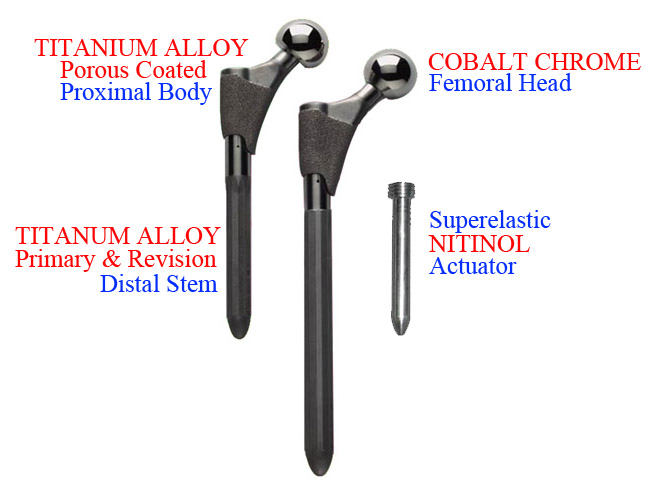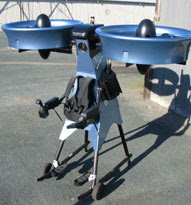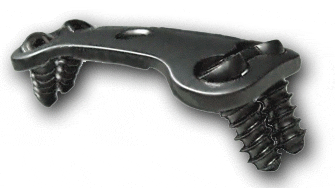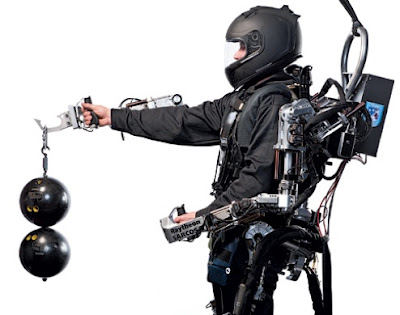Super Strength Soldiers - How and Why - DARPA and MKULTRA - Body Parts etc...©
To be released
12-12-12
A Madness Shared by Two, is not only the true untold story about the lives of Sabina and Ursula Eriksson, alongside the murder of Glenn Hollinshead, based on a critique re-examination of the BBC’s Madness in the Fast Lane documentary that had 7 million viewers [with a conservative estimate of around a further 15 million people having since watched this film via the internet and on websites such as YouTube],glued to their TV screens watching the twin sisters propelling themselves into the fast lane of the oncoming traffic on the UK’s-M6 motorway, as Ursula manages to throw herself under the wheels of a 40ft articulated lorry travelling at 60mph, that seems to swallow her up and spit her lifeless looking body back out of its rear end. It is also the result of a thorough investigation into what might have really happened on those fateful days that led up to this tragic slaying of an innocent man. We challenge the “Official Storyline” and expose what really occurred just hours before M6 dash, for it is here for the first time we expose the Eriksson sisters were “arrested” under the Mental Health Act, though this vital caught on film evidence was edited out of the original BBC films. This will come as a great surprise to many people who questioned; ‘...how was it possible Sabina could have been released from hospital after only five hours’ following their ‘suicide attempt’ on the M6? We also reveal that the coroner’s report shows that the injuries inflicted on Glenn, was done so by ‘two’ weapons, it’s always been believed “Sabina” used one, and that it’s highly likely there were more than one person who killed him and that Sabina could be totally innocent. Yet this obvious evidence seems to have been brushed under the carpet, or at the very least, it was never challenged. We explain how these twins were very likely embroiled in some kind of major drugs smuggling ring and that they had been under “Obbo” [police observation] prior to the M6 incident and was probably so for quite some period of time. As a result of our findings, legal action is now being sought and brought against the police and other related authoritative bodes by the Hollinshead family.
Sabina after being hit by the car below
 You can see by the damage to the windscreen and the hard section of the edge of the roof, that it goes without saying Sabina should have had injuries and not been able to walk freely out of the hospital only hours later.
You can see by the damage to the windscreen and the hard section of the edge of the roof, that it goes without saying Sabina should have had injuries and not been able to walk freely out of the hospital only hours later.Even under a state of hypnosis or use of super drugs or adrenallin, would not result to this sort of outcome. We are talking about the human skeleton covered in a layer of thin skin that easily cuts, grazes and bleeds, yet this didn’t happen, and particularly in Sabina’s case, and like I said, Ursula was more seriously injured, so did bleed in the end, yet her upper part still wanted to get up and escape.
This is not voodoo, but science. What I mean by that, is that we know the ex-amount impact on any surface or object, and what kind of damage it causes, and why we use crash dummies, and then examine the crushed cars and dummies for the obvious signs of destruction and what will soon yield the equated sum and results as to what damage they would expect to find.
WWI - Facial Injuries
WWI yielded a total number of military and civilian deaths over 35 million. There were over 15 million deaths and 20 million wounded ranking it among the deadliest conflicts in human history. The total number of deaths includes about 10 million military personnel and about 7 million civilians. The Entente Powers (also known as the Allies) lost about 6.0 million soldiers while the Central Powers lost about 4.0 million.
In the deadliest conflicts in human history, WWII has to date, yielded over 60 million people deaths, which was over 2.5% of the world population. Out of this figure there were well over 45,000,000 military deaths alone.
WWII - Amputee's
Top secret: Terminators of the Soviet Union
 American historian Jeff Strasberg in his book provides considerable evidence that within the period from 1936 to 1941 the Soviet Union was working on top secret project to create super-soldiers. He argues that the experiment involved some 300 volunteers of young age and cites numerous eyewitness accounts.
American historian Jeff Strasberg in his book provides considerable evidence that within the period from 1936 to 1941 the Soviet Union was working on top secret project to create super-soldiers. He argues that the experiment involved some 300 volunteers of young age and cites numerous eyewitness accounts.
The soldiers were not stuffed with chemicals or drugged out. They were implanted gold electrodes in their brains, eliminating the pain center. Their limb bones were replaced with titanium implants that protected the soft tissues against landmines or shells, as well as from gunshot injuries. In this case, any injury was not threatening and would not cause crushing bones and amputations. Let's not forget this was with the tools and materials available to them over 70 years ago.
Us humans haven’t got the stomach to live with these kinds of atrocities, our inner conscious breakdowns and rips our minds to part, it replays again, and again and again the horrors you see and committed. You were part of that evil, - you helped to totally wipeout some other persons entire family, and yet you are expected to return back home and dress as Santa, - to sing; “Hush a-bye mountain” to your children, and not think about the barbaric and shameful things what you did. So the compartmentalised brain-mind blocks it out, - but it’s always there haunting you, - and all it may take is the sound of a song, the scream of a child or cry from a baby, or simply the back firing of a car, when bang! There you are back in the moment of time, flamethrower in hand burning some village down with all its occupant’s within their homes and still fast asleep.
Vietnam War
They were and still are playing around with heavy cumbersome titanium implants and replacement body parts, and have been doing so for almost 80 years, - now things have changed, things will change, - this kind of material will not be available to "the public", as you'll be lucky to find a dentist on the NHS or SS, let alone being offered high-tech surgery such as Graphene hips or knee cap replacements, though in a decade or so, who knows?
However, who will and does come across this kind of technology is of course the military, and whoever they select to go on whatever project or experiment they so wish.
Research scientists have recently completed the first strength tests on the carbon material Graphene proving it to be the strongest material ever measured. The research establishes Graphene as 200 times stronger than structural steel!
Carbon Fibre Tubes
Carbon nanotubes (CNTs) are allotropes of carbon with a cylindrical nanostructure. Nanotubes have been constructed with length-to-diameter ratio of up to 132,000,000:1, significantly larger than for any other material. These cylindrical carbon molecules have unusual properties, which are valuable for nanotechnology, electronics, optics and other fields of materials science and technology. In particular, owing to their extraordinary thermal conductivity and mechanical and electrical properties, carbon nanotubes find applications as additives to various structural materials. For instance, in (primarily carbon fibre) commercial structures made from carbon fibre graphite composites include fishing rods, golf club shafts, bicycle frames, sports car body panels, the fuselage of the Boeing 787 Dreamliner, aerospace or even car parts, where nanotubes form only a tiny portion of the material(s).
Fig (a) Carbon nano-fibre, (b) Metal oxide tube synthesised by using CNF-a as template, (c) Carbon nano-coil, (d) Metal oxide tube synthesised by using CNC-c as template
And this is why I’m including these such products, as I believe, and bear in mind what’s made public now above, many of these products have had years of R&D spent on them, and with products we haven’t seen on the “open-market".
It would make perfect sense replacing our present much weaker bone structure with this kind of material. I wouldn’t mind a set grapheme ribs, - hips and other joint replacements come to mind. - They will in the near future be on the ‘public market-place’, soldiers injuries are making it go that, - and I believe they already have them and have been experimented on people like Sabina.
I have often thought along the lines of Dr Mengle and his fascination to experiment with twins. I believe the Erickson twins had their main bones replaced, i.e. arms, legs, hips and rib-cage and maybe parts of the skull, as there are 1000’s of patients with titanium plates in the skulls and bodies already, and surely graphene would be a far better material to use.
This highest-quality synthetic form is used in scientific research. The name "graphite fibre" is also sometimes used to refer to carbon fibre or carbon fibre-reinforced polymer.

Titanium plate and screws in wrist.
Titanium nuts and bolts in facial surgery
Titanium Bone plate for maxillofacial repair and reconstruction system
Skull injury
Reconstructed skull, repaired by titanium cranioplasty, 1980.
Total Hips
ActiveLock Modular Hip System & PCHS Monoblock Hip System

"
STRATUS LINK
Ease of Application as a 1-piece Assembly - Spine.

Lumbar Plate

 News Flash: "RevDrill receives US FDA clearance!!!"
News Flash: "RevDrill receives US FDA clearance!!!"
Fast... Lock both distal screws in less than 15 minutes
Accurate... 100% accuracy in distal locking
Safe... No need to use X-Ray imaging for distal hole targeting

The RevDrill makes a truly innovative leap in the surgical procedure for locating and locking the distal screws in intramedullary long bone nailing, by drilling a guide hole through the bone from the inside.


This is possible due to our patented flexible Nitinol drill bit. As the disposable drill shaft is inserted into the IM nail, pre-set guides ensure that the Nitinol drill bit is positioned directly in the center of the most distal screw hole.
Once the automated drilling control box is activated, the RevDrill smoothly and quickly drills a guide hole straight out the screw hole and the bone.

In clinical trials, both distal screws have been locked in less than 15 minutes. This greatly reduces O.R. time, and also lessens the patient's chances of intraoperative infection. With the elimination of using X-ray imaging for locating the distal screw holes, the RevDrill ensures less radiation exposure to both the patient and the surgical team. Having an automated drilling process, the RevDrill ensures a reliable procedure every time.
The simplicity of the RevDrill's design allows any orthopaedic trauma specialist to quickly lock the distal screws.
Titanium rods, pins and screws in shin hip and bones
Zimmer Bigliani/Flatow - The Complete Shoulder Solution
 |
 |
 |
|
Hip-hop!!
DARPA today has a long-term, $3 billion program to help make such a “Metabolically Dominant Soldier.” In other words, the military is studying how to use technology and biology to meld man and machine and transcend the limits of the human body. Described the project director, “My measure of success is that the International Olympic Committee ... The $3 billion program is definitely trying to achieve transhuman performance goals.
The wearable gear would enable running at 100 meter olympic sprinter speed for hours and the 7 foot vertical leap, the wall crawling, personal flight, invisibility, greatly enhanced strength, better body armor and carrying bigger and more powerful weapons.
UPDATE: Advanced gene therapy could provide cheetah or gorilla quality musc...
There are suitable engines for powering the exoskeleton described i...
Coverage of the billion and soon to be multi-billion dollar transge... [Mixing genes between animals to make cheaper drugs or for more productive agriculture]
END UPDATE
The drugs and genetic enhancements and some technology which gets applied would allow for regeneration, faster healing, muscle strength enhancement up to current olympic levels, endurance of an Alaskan sled dog, cognitive enhancement, operate without sleep for many days without performance degradation, the metabolic energy of twenty year old for a forty or fifty year old and immunity to pain.
The Metabolically Dominant Soldier program is managed by Joe Bielitzki. He is talking about fixing your cells so that you could live off your fat. Bielitzki acknowledges the potential for spin-off technologies. “Forty billion dollars a year goes into the weight loss industry in this country,” he muses. “This will change it.”
Regeneration, better healing, better immune systems would all revolutionize healthcare costs and healthcare effectiveness. So trillions in economic benefit as a side effect of supersoldier success. DARPA is also trying to enhance cognition, training and giving the energy levels of youth to the elderly. Those could provide multi-billion or even trillion dollar per year boosts to the US and world economy.
Projects in pipeline range from drugs that will boost muscles and energy by a factor of 10, akin to steroids…on steroids (the project is jokingly termed the “Energizer Bunny in Fatigues”) to wearable, cooling gloves that regulate body temperature and prevent soldiers from getting overheated (and thus tired) even on the hottest desert day. [Keeping the body cool increases endurance]
This program is going well beyond some current relatively safe and ...
A major focus is on helping the soldier’s body to better deal with trauma and damage. One such is the “pain vaccines” coming out of a program at Rinat Neuroscience [Pfizer acquired Rinat Neuroscience in 2006]. Researchers are hopeful these “will block the sense of pain for almost a month,” describes DARPA’s Michael Goldblatt.
The substance does is block intense pain in less than 10 seconds. Its effects last for 30 days. It doesn’t stifle your reactions. If you touch a hot stove, you still have the initial shock; your hand will still automatically jerk away. But after that, the torment is gone. The product works on the inflammatory response that is responsible for the majority of subacute pain. If you get shot, you feel the bullet, but after that, the inflammation and swelling that trigger agony are substantially reduced. The company has already hit its first milestones in animal testing and is preparing reports for scientific conferences.
Army Soldier enhancement systems
The plan is for new body armor that, instead of Kevlar, is filled with nano-materials that are connected to a computer. [Computer controlled liquid armor] It would normally be as flexible as regular uniform made of fabric. But, like how a crash-bag works inside a car, it would activate whenever the system detects a bullet strike and turn as hard as steel in an instant.
Gloves could turn into real-life brass knuckles.
The fabric could even be woven in with "nanomuscle fibers" that simulate real muscles, giving soldiers more an estimated "25 to 35 percent better lifting capability." So myostatin strength boost to get to olympic athlete strength levels and then 25-35% boost from a soft suit. Use better exoskeletons for more strength enhancement.
From deflecting bullets to powers of invisibility, as military analyst Max Boot writes, such a suit truly “would give ordinary mortals many of the attributes of comic book superheroes.
Our wimpy little Achilles tendons allow the average human to run somewhere between 6 to 8 miles an hour and, unless your name is LeBron James, leap only a few feet in the air. New “bionic boots” and “spring walkers” in development are hoped to solve this. These attach outside the leg and mechanically mimic the enlarged Achilles tendon of a kangaroo, one day perhaps giving the wearer the ability to run as fast as 25 miles per hour and leap 7 feet.
The “Z-Man project.” Creating gecko inspired gloves and boots for wall crawling.

Robotic gecko demonstrator

Exoskeleton flying vehicle with a maximum speed of maximum Speed 113 mph, range of 184 miles and endurance of endurance 2.2+ hours.
The Mesoscopic Integrated Conformal Electronics (MICE) program has already succeeded in printing electronic circuits on the frames of eyeglasses and helmets, weaving them into clothes, even putting them on insects. These include electronics, antennas, fuel cells, batteries and solar cells.
The Biological Input/Output Systems program is designed to enable plants, microbes and small animals to serve as “remote sentinels for reporting the presence of chemical or biological” particles. They’d do this by changing color, lighting up fluorescently, dropping their leaves or changing the color of their flowers.
The Brain-Machine Interface program is investigating how you would put wireless modems into people’s skulls.
And that’s just the Defense Sciences Office, the department of DARPA most directly involved with human enhancement. Meanwhile, on the floor where the Information Processing Technology Office (IPTO) resides, its director, Ron Brachman, former research vice president at AT&T Labs and previously at Bell Labs, and president of the American Association for Artificial Intelligence, wants to complete DARPA’s vision from the sixties. When the original IPTO was created in 1962, its director, J.C.R. Licklider, focused the office on his novel conception of computers and humans working in symbiosis. That idea resulted in the Internet. Now the new IPTO “wants to realize this vision by giving computing systems unprecedented abilities to reason, to learn, to explain, to accept advice, and to reflect, in order to finally create systems able to cope robustly with unforeseen circumstances,” according to Brachman. The object of the game is to produce machines—and the italics are his—“that truly know what they’re doing.
A project is regarded as "DARPA-esque" only if few others would tac... DARPA's attitude is if an idea looks like a sure thing, let somebody else fund it. The “special focus area” is for really extreme projects.
FURTHER READING
Darpa supports the Raytheon Sarcos XOS exoskeleton
Of the three teams that took part in a seven year $75 million project (Sarcos, Oak Ridge National Laboratory, and the University of California at Berkeley), the XOS emerged in 2005 as the suit closest to the agency's initial vision. It is the only full exoskeleton the military has moved into the next development stage; Sarcos is now working under a two-year, $10-million Army grant.
During XOS demos the suit is tethered to a hydraulic pump that draws electricity from an external power supply. The suit can operate from batteries, but only for 40 minutes at a time.
The country's other two top exoskeleton designers, Massachusetts Institute of Technology professor Hugh Herr and Homayoon Kazerooni of the University of California at Berkeley, began with the power problem.
Herr is trying to build a leg-powering machine that uses as little energy as possible—the first iteration draws a mere two watts, comparable to a portable radio—but can support 80 percent of an 80-pound load on a user's back. Herr thinks that within the near future, he can improve the mechanics so that the machine actually saves the wearer effort.
Kazerooni has made the Human Load Carrier (HULC) which is a lower-body exoskeleton that can operate for more than 20 hours without recharging. He says it allows the user to carry 100 pounds on his back and burn 15 percent less oxygen than if he was supporting the added weight alone. A three-year, $2-million grant from the National Institute of Standards and Technology is being used to modify as a wheelchair replacement.
The army is now performing live fire tests of new body armor
Currently : the Army issued the Improved Outer Tactical Vest, a redesigned version of Interceptor body armor, starting in late 2006. The soft body armor protects against 9mm ammunition and fragmentation. IOTV is also equipped with front, rear and side armor plates known as Enhanced Small Arms Protective Inserts. When worn together, the IOTV will stop 7.62mm armor-piercing rounds.
Several vendors have demonstrated they can produce body armor that can outperform the protection offered by IOTV with ESAPI.
The Land Warrior system was sent in to battle in spring 2007 with t... At that time the deployed system weighed 10 pounds (down from 17 pounds). The weight has been dropped to seven pounds, and they expect to reduce it even further.
Program Executive Office (PEO) Soldier was created by the Army with one primary purpose: to develop the best equipment and field it as quickly as possible so that our Soldiers remain second to none in missions that span the full spectrum of military operations. PEO soldier currently has 400 programs.
The Soldier Enhancement Program (SEP) is to identify and evaluate commercially available individual weapons, munitions, optics, combat clothing, individual equipment, water supply, shelters, communication and navigational aids which can be adopted and provided to Soldiers in three years or less.
Source: http://nextbigfuture.com/2008/07/3-billion-super-soldier-program-10...
Above opening photograph: This is the photograph of a Titanium plate being fitted into the lower jar section. The plate was bent to bulge laterally outward a bit the reconstructed jaw would have similar contours to the face pre-surgical jaw. The pre-fitting is used to place the holes the plate through which the plate will be attached to the jaw. Four screws in the frontal part of my mandible and two screws on the condylar aspect.
"Destroying the New World Order"
THANK YOU FOR SUPPORTING THE SITE!
Latest Activity
- Top News
- ·
- Everything
THE GREAT FLOOD Official Trailer (2026) Netflix | Global Disaster Movies 4K
Mothman Prophecies
The 100 Series Designated for SAC and a Possible WWIII
Human Be-In - Full Program - 1/14/1967 - Polo Fields, Golden Gate Park (Official)
Sebastion Piñera and 5G
© 2025 Created by truth.
Powered by
![]()






















You need to be a member of 12160 Social Network to add comments!
Join 12160 Social Network